万字长文,从恐惧感营造角度谈恐怖游戏关卡设计
电影和游戏中常会出现一些让观众/玩家吓得惊声尖叫的一系列规律和场景。这些元素最初还是原创理念,随着时间发展就变成了常见规律了。例如:
*灯光忽闪忽现的暗室。
*废弃的建筑或收容所。
*走廊尽头突然出现一个小女孩,但很快就消失了。
*电话响了,但接电话时对方却没有任何声音,或者只听到急促的呼吸。
*大雾迷漫的环境中,可以听到潜伏在某个角落的怪物发出的声响。
*角色们被滞留在一个被废弃的小镇中。
这种例子数不胜数。
这里的“规律”我指的是已经被过度使用,丧失其原本新意的想法。在上述例子中,有些规律的运用恰到好处,有些则并非如此。有些一开始可能是原创理想,但经过多年的电影 和游戏熏陶,我们仍可一下子猜出接下来的剧情。
这些规律的问题在于,我们可以预知将发生什么情况,因为我们此前看过太多类似情景了。我们知道杀手不会在第一次出手时就死亡,他们总会不断回来骚扰主角。我们也知道当 主角们分开时,通常意味着生离死别。这正是规律的问题,我们总能料想到结果。
有些运用恰当的规律使用了角色、故事和场景设置。在这方面表现良好的游戏,会在我们认为应该会很恐怖和吓人的地方做得更好。它们还是会制造出恐怖效果,引进新的玩法, 体验和恐怖视觉效果。
下图是《生化危机4》中的一帮村民。
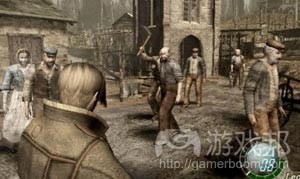
生化危机4(from worldofleveldesign)
这是《F.E.A.R and The Ring》中的幽灵女孩。
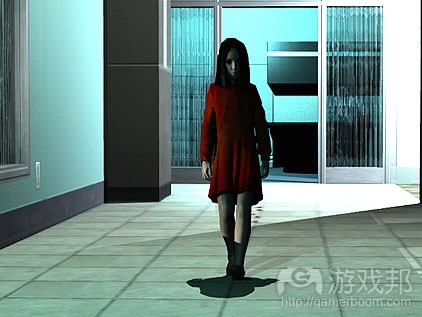
fear(from worldofleveldesign)
《求生之路》引进了合作玩法和受到感染的人群。他们并非丧尸,但就像《惊变28天》一样改写了“僵尸”电影的定义。
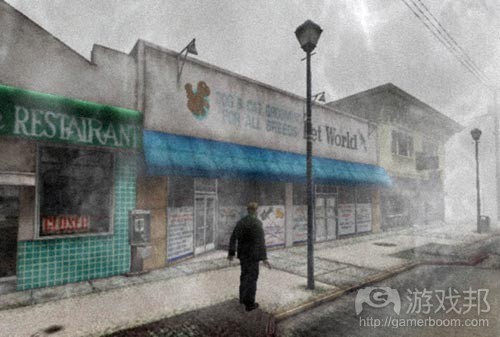
silenthill-town(from worldofleveldesign)
《寂静岭》中被废弃的小镇,或者《鬼屋魔影》中闹鬼的屋子。
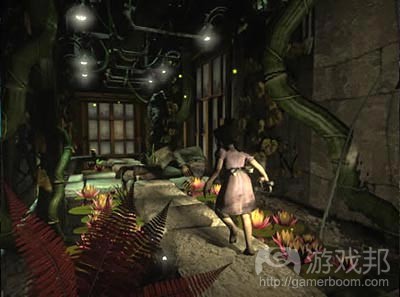
bioshock2(from worldofleveldesign)
《生化奇兵》,结合了第一人称射击游戏以及恐怖求生游戏元素,创造了一种令人难忘的场景。
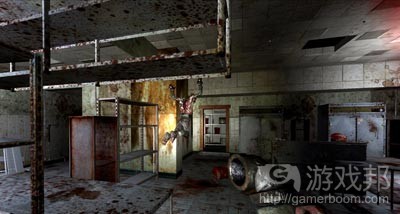
condemned-2(from worldofleveldesign)
《死刑犯2:充血》,融合了第一人称射击游戏以及恐怖求生游戏元素,并引进了混战格斗元素。游戏中含有足够的熟悉元素,同时又不乏新颖性。《死刑犯2》的关卡设计贯穿着 混战格斗元素。
由此可见,规律很重要,它们有助于玩家理解游戏。
规律确实管用。
即便我们知道即将发生什么情况,它也还是能创造一些让我们回应的心理恐慌。这也正是它们被称为规律的原因,因为它们是被证实可行的做法。
所以我们的目标就是认识规律,并对其进行深华。
要了解规律的表现元素及其运行原理。这样你就能预知玩家的反应。了解玩家的预期以及他们可能采取的行动,可以让你为他们带来更多新意。要善于使用规律作为关卡和游戏设 计的基础。
但规律本身并不会令人印象深刻,它们很容易被遗忘。它们确实会吓到玩家,但却只是一种小伎俩。只有使用规律并了解玩家对此产生的反应,你才有可能引进新元素。使用规律 很简单,但要让玩家记住却很困难。
就像我们都记得《第六感》的结局,但却不记得其他使用相同结尾的电影。
有些规律包含故事元素,场景和特定事件,例如忽明忽暗的灯光,以及在镜中看到自己的身后之物。
你可以将这些规律作为起点,探索和引进吸引玩家融入情景、故事和关卡的新元素。
所以,在此我就总结4点,就是我认为对于创造恐怖感,让玩家在你的关卡设计中感到害怕的4个重要原则。如果使用得当,可以制造出一种令玩家在关卡/游戏结束后仍然心有余悸 的情感反应。
这4个元素分别是:
*故事和场景
*关系
*预期和节奏
*道德决定
执行步骤:
在开始观看恐怖和悬疑片时,记录下你所看到的一些常见规律,以及你当时对这些特定事件的反应和预感。了解导演在此的意图是什么,何处会激发人们的心理反就。为何你在电 影的紧张时刻会产生当时那种感觉。
总之要多玩恐怖救求生游戏,并研究人的心理,了解人们做某些事情的原因。
预期和节奏
预期和节奏是创造任何单人和多人地图的一个重要环节。这对于创造一款成功的恐怖求生游戏来说更为重要。
节奏指的就是速度。
预期就是对即将发生某事的预感。
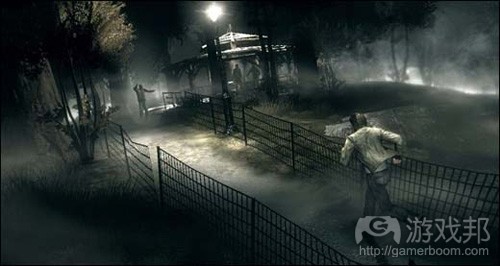
alone_in_the_dark01(from worldofleveldesign)
节奏和预期可以让设计师知道如何吓到玩家,何时及如何执行设置。这一切都要取决于成功把握节奏,创造针对特定事件或结果的预期。
设计师应逐渐而一丝不苟地创造节奏。就好像上楼一样小小翼翼,一步一个阶梯地走到楼顶。而不是三步并作两步直奔到顶。
当你到达楼梯顶端时,就得开始创造预期,就好像猝不及防地从楼顶跌至楼底。如果你一开始就引入一个杀手或怪物,那就没有多少神秘感,最后就没有什么可以保持节奏,吊足 玩家胃口的元素了。

rollercoaster(from worldofleveldesign)
好比是坐过山车。当你在排队等待时,会听到过山车呼啸而过的声音。听到其他人在尖叫,感觉地面在震动。随着你在队伍中往前移,就会看到排在前面的人坐上过山车。队伍越 近,你越觉得自己心跳加速。直到你自己坐进车厢时,才发现已经无法回头了。你要被困在这个小小的车厢里。现在你开始慢慢等待自己平静下来,而后过山车首次垂直降落时, 你会发现自己在等待中的一切预期全部得到验证。
如果所有等待的结果令人失望,那么就达不到预期效果了。你的体验也会被破坏,而如果你没有建立这种预期,你突然间被送上天,并飞快地翻滚几个回合之后就结束了,这也同 样是个令人失望的经历。
可以把这想象成一个没有回转点的弧线。这正是多数电影的剧本创作方法。你可以用同样的方法设计你的关卡和事件。

curve(from worldofleveldesign)
当你为故事的事件创造节奏时,实际上也是在为玩家制造预期。最后这种预期必须符合玩家走在整个游戏或关卡时所产生的预期。你得通过为一系列事件的发展过程设置节奏而创 造预期。
可以将关卡中的事件想象成一个事件发展始终的过程,其中不乏逐渐上升的冲突。例如在《反恐精英》中,你要购买武器,然后进入一个阻塞点,开始交火。你的多数队友阵亡了 。一切暂时平息下来,你继续深入前进,安置炸弹,这里的预期又再次高升。随着倒计时进行,你清楚反恐精英们将在被炸区域四处作鸟兽散。在最后一秒弹药爆炸了,你的预期 也得到了验证。
最好创造一些极为震撼的效果,如果玩家从中幸存,他们就会对此印象深刻。不要刚开始就一骨脑儿地亮出所有底牌,要通过引入预期而逐渐制造节奏。
要善于使用规律。认识到规律的本质,了解用户会如何回应,因为他们经过多年耳濡目染,已经能够预感即将发生什么情况。最好是数次引用规律,然后突然来一个大转变——引 入不可预期的情况。在地图上使用一个焦点,是创造预期的一个好方法。
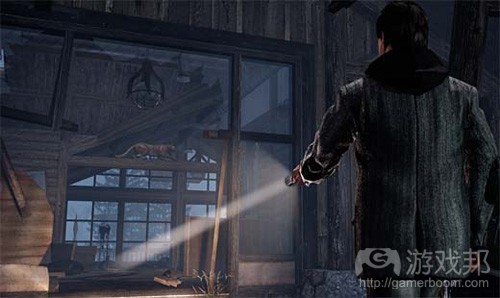
alan wake(from worldofleveldesign)
可以使用光线和声音来调动玩家注意力,将其引向场景中的一个特定点。当然,不要抖出一切内容。
要使用提示信息。使用声音和噪音是一个创造预期的好方法。
在各个事件之间创造足够的空隙让玩家喘气,下一个事件应该比之前的更具趣味性和挑战性;要慢条斯理地引进事件。
制造风暴之前的平静假象
这是一种创造剧烈事件,在数秒之间从0飙到60的有效技巧。一开始要先确保场景中的一切都很平静,没有丧尸,没有杀手,也没有boss,好像一切都很完美,然后你要引入一个声 音,数秒之后就突现险境。《求生之路》就是这方面的典型,玩家还来不及呼救就已经被敌人团团包围。
然后,引起大混乱。
这方面的完美典型是《拯救大兵瑞恩》。

saving-private-ryan(from worldofleveldesign)
在电影末尾,当他们准备在小镇中与纳粹战斗时,你可以看到他们坐着聊天和听音乐。看起来一切都很好。但在数秒之间,这个地方就沦为战场。
平静之中总是酝酿着风暴。
这里有3个为关卡设置节奏的方法。想想你的关卡设计中可以运用这种方法的特定事件。可以使用这里的弧线图,它同时适用于单人和多人游戏。
想想那些拥有明显上升弧线的电影,例如《铁血战士》和《泰坦尼克号》。
研究一下《拯救大兵瑞恩》中的节奏和预期设置方法。
你该如何为玩家创造预期,让他们在最终结果出来之间持续心跳加速呢?
故事和环境
故事才是王道。
你关卡中的故事是否具有力量,这要取决于两个方面。环境的故事,角色在该环境中的故事,以及这两者之间的关系。
故事是我们所记得的事物发生及结束过程。我们喜欢讲故事,也喜欢听故事。故事是我们通他人沟通和交流的最佳方式。我们并不在乎真相,如果要传授历史知识,通过讲故事的 方法要比告诉我一些日期时间,以及我记不住的人名更有效。
在《求生之路2》发布时,我还在攻克《求生之路》的战役地图。我请女友来撰写关于Louis、Zoey、Bill和Francis这四个人在新奥尔良一路同丧尸作斗争的虚拟小说。
她写了这些人物出现在当地的原因,他们如何聚集到一起,他们为何相互支撑着活下去。他们每个人都有个独立的目标,需求和愿望。其中自然而然地提到了故事发生的环境。每 个角色的背景就是由一系列事件和情况造就的。当他们宣布推出《求生之路2》时,我就放弃了自己的想法。

l4d2_01(from worldofleveldesign)
但这个举措对我来说却非常重要,极大开阔了我的眼界。虽然这个故事无法见到天日,但其中的深度却可贯穿至关卡设计。这一举措令我得以创造更有深度的角色和场景。
环境的故事
地点。
有些特定的环境更能传递恐惧感。例如,废弃的房子和旧旅馆房间就比全新的办公大楼更可怕。原因在于前者具有历史,含有过去居住其中的人遗留下的痕迹。而全新的环境却没 有这些情况。所以我们在环境的故事中也可以看到恐怖片/恐怖游戏发生的一般规律。

offices(from worldofleveldesign)
要确定环境的以下要素:
*什么地点?
*什么背景?
*什么时间?哪个季节?
你想在此表达什么心情?要让环境补充故事,以及你所希望达到的意图。还要让环境推动故事向前发展。
收集参照图
这是一种技巧,可用于创造玩家与地点的情感联系。首先要自然引入环境,不要带有丧尸、连环杀手或你的设计中含有的恐怖元素。这个环境或许是角色工作的地方。
之后,待玩家熟悉这个地方后,在他们遇到恐怖事件时再重新把他们引进这一场所。
此时玩家会产生一种心理联系,鉴别这个场所。因为他们之前已经来过,对它很熟悉,而不是像初来乍到那样对它一无所知。
例如,在《英雄本色》(电影/游戏)的卧室中,Max Payne在游戏之后的环节又回到了那个地点 。
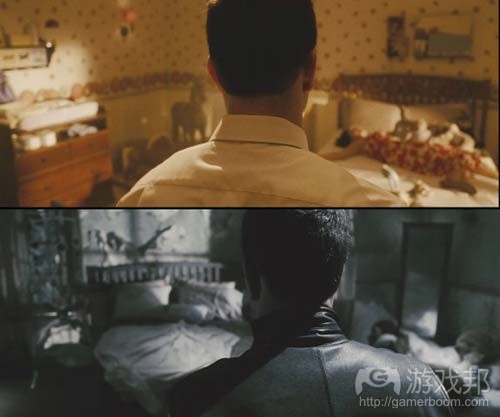
maxpayne-bedroom(from worldofleveldesign)
接下来就是创造恐怖环境和关卡设计的最重要环节。你得创造一种与玩家相关的环境,要让他们能够识别,以便感到有情况发生。

惊变28天(from worldofleveldesign)
如果是上图这种情况,你就不一定要去过该地,也能够识别出来。因为多数人都知道伦敦大概什么样子,所以他们在《惊变28天》中也能够认出来。
只使用那些与你的游戏角色直接相关,以及支持故事发展的场所。如果你能够将一个场所同玩家联系起来,它就能够加强环境与玩家的联系。
实践:
*撰写一则游戏环境的故事。要想象你是在向好友讲故事。故事中有哪些人物,环境为何如此发展,为何所有人要离开?
*这个环境是如何造成的,其中发生了什么情况?
*想想其中的情感影响,以及这个故事如何为环境创造更多深度,并将其同角色和玩家联系起来。
关系
关系指的是玩家与其他角色、故事和环境之间的关联。在游戏中建立一种关系是极具挑战性的任务,在恐怖类游戏中尤其如此。没有太多游戏和电影能够巧妙处理这一点,而能够 做到这一点的基本上是令人印象深刻的作品,并招来许多跟风之作。

英雄本色(from worldofleveldesign)
我们很难不露痕迹地创造两个或更多角色之间的情感联系,因为建立关系需要时间。在电影中,我们常看到牵强的爱情故事,或家庭伦理故事。但很多时候我们并不在乎,因为在 此要建立真正的关系根本就无从入手。所以这些故事看起来就像是事后再添加的一样。
要在游戏中插入一个强大,并且同玩家有关的联系是项极耗脑力和时间的工作。作为人类,我们总想与他们联系,我们希望分享自己的经历。
角色间的共同经历更易于让他们建立关系。有些强大的情感联系就是人们经过一些剧烈的事件而建立起来的。
任何共同的情感都会产生一些化学反应。例如悲伤,爱、兴奋和趣味等。如果你可以为正在体验游戏或地图的玩家引进其中任何一种情感,你就可以为他们创造一种情感联系。如 果你尽早进行有效的铺垫,你就能够让用户沉浸其中。

我是传奇(from worldofleveldesign)
最近还有许多游戏利用狗作为“伙伴”,其中原因之一是,狗更容易同玩家建立情感联系。这也是几年前的虚拟宠物如此盛行的原因。在电影中,我们可以看到成百上千万人死亡 ,但如果看到一只狗丧生我们就会觉得这是一个悲剧。例如电影《我是传奇》。
狗同玩家和角色之间的关系虽然也已经是一种过时的规律,但在电影游戏界仍然算是一种新颖的形式。例如《神鬼寓言2》、《辐射》等游戏中的主角与其四肢行走的伙伴之间都有 强大的情感性关系。
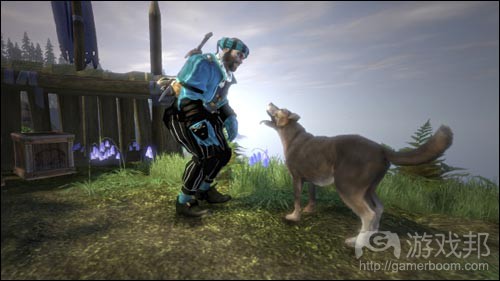
fable2(from worldofleveldesign)
那么在玩游戏过程中,你和动物之间已经建立深厚关系时,却发现因为前面有一个无法攀登的栅栏或牢不可破的玻璃墙,你和自己的狗不得不就此分离时,又该如何?
你只能眼睁睁,无可奈何地看着坏蛋或一群丧尸逼近并杀死你的狗。如果在此之前,你已经投入大量时间和精力玩游戏,你会有什么感想?
我不知道你会有什么反应,但我想象得到这种情景,也能感觉到这将发生什么情感影响。这就是你希望玩家体验的一种强大情感,这并不容易实现,但如果做到了,效果会很惊人 。
在关卡设计中涉及建立情感这方面,我建议你参考以下原则:
*玩家同其他人类的关系要比同财物的关系更强大。我们通常会看到有人损失了一橦房子或汽车或一些财物,但实际上人只有失去了另一个人这种更重要的东西时,才更易于引起玩 家的情感回应。
*如果我向你展示了一些创造悲伤情感的东西,并在该关卡之后环节中重新引进这一元素,你就会像初次看到它一样产生同样的反应。我现在可以用这一方法在关卡中重新激发你的 同种情感。
例如,假如你是在《毁灭战士3》的洗手间这种场景中让玩家遭遇以下情景,那么他每次进入该洗手间,都会对这个环境产生一种心理反应。
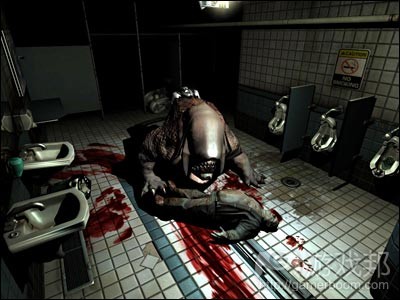
doom3(from worldofleveldesign)
《神鬼寓言1》和《神鬼寓言2》也是将角色重新引进他原来的出生地来实现这一效果。
*音乐可以创造出情感关系,并令其更为深厚。可以在你游戏的关键环节和高潮部分使用特定音乐,以加强玩家和角色之间的情感联系。
*角色同环境之间的关系可以发挥绝佳效果。例如,假如角色返回他们之前去过的环境,但现在环境发生了变化。
例如在《英雄本色》游戏刚开始时,主人公的妻子和孩子都被强闯家门的毒犯子杀死。在游戏后面,我们可以通过他的梦境回到这个场景。我们已经拥有同主人公的情感联系和对 该场景的特定回应。这是一种令我们希望快速解决开场时所发生情况的强大动机。
要关注人的普遍情感,并创造使玩家融入其中的情境。这需要花费一些时间和精力。要了解你所处的情况,环境以及参与其中的角色。
道德决定
最后就是玩家在游戏中所做出的道德抉择。一般而言,道德是一个更改我们社会行为的规则系统,它要求我们行善而非作恶。
《求生之路》就是关于道德抉择的一个优秀典型。
你同其他4个人类玩家一起并肩作战时,通常就得针对团队做出一些决定。

left4dead_decision(from worldofleveldesign)
要由谁最后摁下按钮召唤一群丧尸?你是否会等待最后一个玩家进入藏身房?你是否会关门让他们等死?你是否会不顾其他三名玩家的安危,跳出安全地带去救其中一名队友?
你们要并肩作战,如果一名角色走丢了,并受到丧尸攻击,作为玩家的你就要做出道德抉择,究竟是不管他们死活自己逃命,还是帮助他们从而让自己陷入险境?还要考虑你当时 的命值、你离藏身房的距离,以及是否有其他玩家伸以援手等因素。
这一切都会影响到你所做的道德选择。我们很让自己作出决定,我们多数决定都要取决于其他人的境况以及一个特定的情境。
含有这种道德选择的游戏包括《神鬼寓言》以及《神鬼寓言2》,还有最新的PS3游戏《Infamous》。
在电影《惊变28周》中,当丧尸闯进藏身房的,主角就得决定离开还是陪在妻子身边。他和妻子都在同一个房间,但隔着丧尸。丧尸破门而入时,他就躲在门边,丧尸看到他妻子 ,但却没有发现他。
她看着自己的丈夫并向他呼救。这个主人公知道,如果他去施救就会死。这个时刻是其做出道德决定的最重要元素。他选择逃跑并将她关在门内。
在他逃跑过程中,我们可以看到他妻子趴在窗上无助地看着他远去的背景,任凭丧尸在她身后撕咬。这个场面令人难忘。

惊变28周(from worldofleveldesign)
在《侠盗猎车手4》中有个任务拥有2种结果。在你同游戏中的两个角色建立良好关系后,你得到的任务就是杀死其中一人。PlayBoyX给你的一个任务是杀死他的好友,而后者正好 也是你的朋友。在你去完成任务的路上,却接到你将杀之人打来的电话。他说自己需要你的帮助,因为他觉得PlayBoyX准备杀他。现在你就面临一个道德窘境了,你该杀谁?你会 选择忠诚和友谊,还是选择金钱?
所以,你该如何让玩家开始同游戏和关卡产生更多情感联系?
*可以从向你的游戏、关卡设计引入选择入手,令其成为一个独特而罕见的地图。
*在玩家的路径中引进一个选择。
*让角色们分离。
*让角色们做出两难选择,让其中之一应对其他情况。
为某一情况下的玩家引进含有真正后果的选择
如果你已经建立了一种原先就成立的关系,并给予玩家一种会给游戏故事、环境和角色的幸福带来重大影响的选择,那么你就有望创造一种真正独特和具有情感影响力的游戏/关卡 设计。
相关拓展阅读:篇目1,篇目2(本文由游戏邦编译,转载请注明来源,或微信咨询zhengjintiao)
Following series of articles are going to go in depth and explain how to create horror and bring fear in level and game design.
Survival horror level design.
This is part 1 out of 5.
There are sets of rules and situations that seem to appear in movies and games to induce fear and scare the audience/player. That may have started as original ideas, over time became cliches.
Dark room with flickering lights.
The abandoned building or an asylum.
A little girl that shows up at the end of the hallway and then disappears.
A phone that rings, when answered no one is on the other side, or you hear heavy breathing.
Foggy environment with noises and sounds of creatures awaiting for you just around the corner.
Characters that stay around in abandoned small towns.
The list goes on.
Definition of cliche is ideas that have been overused to the point of losing its intended force or novelty. In the examples above, some cliches were used very effectively, others weren’t.
Some may have started as original ideas in the beginning but over the years of watching movies and playing same videogames, we know what is going to happen.
Problem with cliches is we know what to expect because we have seen it so many times. We know that the killer doesn’t die after the first try; they always come back and jump at the character one more time. We know that when characters split up, it usually means death for one of them. That is the problem with cliches. We know their anticipated outcome.
Some effective cliches are use of characters, story and environment settings. As an example of what some of these games did well is they took what we used to consider to be scary and terrifying and they made it better. They made it scary again. They took the cliches that were no longer effective and introduced new ways of playing, experiencing and looking at the horror genre.
A mob of villagers in Resident Evil 4.
Resident Evil 4
Monolith’s F.E.A.R and The Ring ghost girl
Monolith’s F.E.A.R
Left 4 Dead introducing co-op play and infected. Not zombies. As well as the ability to play as the infect. Just as ’28 Days Later’ redefined what “zombies” movie should be.
Left 4 Dead
Abandoned small town in Silent Hill or a Haunted House in Alone in the Dark.
Silent Hill
BioShock. Combining first person shooter with survival horror elements and creating a setting that is memorable and unforgetable.
Bioshock
Condemned 2:Bloodshot Taking the first-person shooter and combining with survival horror elements and then introducing melee combat. There is enough of familiarity and yet enough originality. Level design of condemned 2 is driven through the melee combat elements.
Condemned 2
Now cliches are important. They are important to know and understand.
Cliches do work.
Even when we know what is going to happen, there are certain psychological triggers that make us react. That is why they are cliches, because they have been proven to work.
The goal is to recognize the cliches and then take it a step further.
Knowing how cliches work and what they are. You would then be able to anticipate the player’s reaction. Having that knowledge of player’s expectation and their possible next step you are able to put a new spin on them. Use cliches as a base for your level designs and game designs.
But cliches alone are not memorable. They are forgettable and unremarkable. They scare the player yes, but they become a gimmick. Use the cliches and by knowing the players reaction to them you are able to introduce new elements. Using cliches is easy; making the player remember them is hard.
Just as we all rememeber ‘Sixth Sense’ ending, but we all forget dozen of other movies that use the same ending.
Some cliches include story elements, environments and setting and specific events such as the flickering lights and the seeing things in the mirror behind you.
Using the cliches as a starting point you can begin to explore and introduce new elements that hook the player to your environment, your story and your level.
So, I’ve come up with 4 points, 4 important criteria that I believe are important to create horror and bring fear in the players in your level designs. If used right, it can engage andcreate an emotional response that will stay with the player way after the level/game is finished.
These four elements are:
Story and Environment
Relationships
Anticipation and Pacing
Moral Decision
Action Steps:
Begin watching horror and suspense film and start taking notes what cliches you see, what reaction and anticipation you feel to those specific events. Begin recognizing what the director is trying to do and where the psychological triggers are. Why are you feeling the way you are during the heightened moments of the film? Play survival horror games and study human psychology.
Learn why people do the things they do.
Anticipation and Pacing
This is part 2 out of 5.
Anticipation and pacing is an important part of creating any single player and multiplayer map. It’s even more important to creating a successful horror and survival level.
Pacing is the tempo, the speed that something is revealed.
Anticipation is waiting for something to happen, an expectation.
Pacing and anticipation is knowing how to scare the player, what to do and when to do it. All this comes down to successfully pacing and creating anticipation to a certain event or an outcome.
Bioshock
Pacing should be build slowly and meticulously. Thinking through every event as each step on a staircase. One step at at time until you reach the top. You never want to go from step one to step ten without hitting every step along the way.
When you reach the top of the stairs, and you have built the anticipation so high, that now it is time to release by jumping down from the top step to the bottom. If you introduce the killer or the monster at the beginning then you don’t have anything at the end to keep up the pacing or to keep the player’s interest.
Think of a roller coaster. As you wait in line, you hear the sound of the roller coaster go up and down. You hear others screaming and yelling. You feel the ground shake. As you slowly make your way you see others in front get in and they are gone. As you get closer and closer you feel your heart pumping faster and faster. So once you are inside the cart, there is no point of going back. You have been strapped in and ready to go. Now you are going up slowly waiting
for your decent, and then all that waiting and build up is justified by the roller coaster being released as you plummet on the first dive.
If all that waiting around comes to a disappointing release then the intended effect is lost. Nothing would make up for it. Your experience would be ruined. At the same time if you didn’t have the build up, and all of a sudden yo et on and whoosh, its over. It would be a disappointing ride.
Think of an arc with a point of no return at the end. This is how most films are written. You want to design and think of your events in your level the same way.
Arc:
As you pace your story and the events you are creating anticipation in the player. Then the anticipation at the end has to justify the expectation that the player had through out your entire game or level. You have to build up anticipation by setting the pace from one progression of events to the next.
Think of your events in your level as progression of one event to the next, but with rising conflict. For example in Counter-Strike you buy weapons, then you run towards a choke point, firefight happens. Most of your team dies. Everything calms down for a second; there is a moment of serenity. You advance further, plant the bomb, anticipation is built even higher. Timer ticks down as you know that the CTs are going to rush the bombsite to diffuse. At the last second it goes off. Expectation justified.
Build it up to something great and then release hell. If the player survives then it is something to remember. Never introduce and give away everything in the beginning. Wait till later. And build up your pacing slowly by introducing anticipation.
Using cliches. Recognizing what they are and knowing how the audience will react to it, because over the years they have been conditioned to know what is going to happen. Do it a few times then switch it up.
Be unpredictable.
Use a focal point in your map is a great way to build anticipation.
Use lights and sound to drive the player’s focus to a specific spot in the environment. But of course don’t give away everything.
Use hints. Use of sound and noise is a great way to build anticipation.
Create enough space between each event to let the player breath before the next even happens. Next one comes, should be harder and more interesting and challenging then the previous one. Introduce your events slowly, meticulously and well thought out.
Sparingly.
Create calm before the storm.
This is a very effective technique that allows creating an exciting event and going from 0 to 60 in a few seconds. You make sure that everything is calm in the environment, no infected, no killers, and no bosses. Almost like everything is perfect, then you introduce a sound or two and few seconds later, all hell breaks loose. L4D uses this in a great way, when you call for help and you have a few seconds before the horde gets there.
Then, all hell breaks loose.
Dead Space
Saving Private RyanPerfect example of this is in Saving Private Ryan.
At the end of the movie when they are getting ready to fight the Nazis in the small-bombed town, you see them sitting around, talking and listening to music. It’s almost perfect. But within few seconds the entire place breaks into a war zone.
Calm before the storm.
Come up with three ways you could introducing and pace your level. Think of specific events in your level design you could introduce this. Use the arc image to help you. This could be used for single player or multiplayer.
Think of the movies that have a clear rising of the arc. Pacing and anticipation and then the drop off such as Predator or Titanic.
Study Saving Private Ryan for Pacing and Anticipation.
How can you create anticipation in your player that where their heart begins to pump way before the final outcome is revealed?
Following series of articles are going to go in depth and explain how to create horror and bring fear in level and game design.
Story and Environment
This is part 3 out of 5.
Story is king.
The power of story in your level comes down to two things. The story of the environment; and character’s story in that environment. As well as the relationship between each other.
Story is what we remember after everything is done and over with. We love to tell stories. We love to listen to stories. There is no better way to communicate and to connect with someone.
We don’t care about facts. If you teach me history and just give me facts about dates and people I won’t remember it.
I was working on a Left 4 Dead campaign map before they announced L4D 2. I asked my girlfriend to write a fictional story of the 4 characters Louis, Zoey, Bill and Francis and what would be their story as they are fighting through infected in New Orleans.
She wrote why the characters were there, how they got together and why they would stay with each other to survive. Each of them had individual goals and their own needs and wants. The environment came together all by itself. Each character’s background created a set of circumstances and events. When they announced L4D, I had to scrap my idea.
Left 4 Dead 2
But, the exercise was very important eye opener for me. Even though the story may not have been shared in its entirety if my campaign saw the light of day. The depth would seep through the
level design. Doing that exercise helped me create more depth to the characters, and more depth to the environments.
I want to introduce to you another story.
Story of the environment.
Location.
There are certain environments that are more effective in communicating horror and fear then others. For example abandoned buildings and old hotel rooms are scarier then brand new office buildings. Reason is because they have history and past associated with them. There are traces of human history in the environments. Brand new spanking environment doesn’t have that. So we already are seeing traces of clichés in the story of the environments.
Identify the Environment
What is the location?
What is the setting?
Time of day? Season?
etc
What is the mood you want to communicate? The environment has to compliment the story and the purpose you are trying to achieve. It also has to drive the story forward.
Collect reference images.
Here is a technique you can use to create more of an emotional connection between the player and the location. First introduce the environment as it is, without the elements of infected, serial killer or the fear element you have in your design. Perhaps it’s a place they work in.
Then after the player is familiar with the place re-introduce them to it after they have encountered the horror.
What happens it this situation is the player has a physiological relationship, identification with the place. Because they were already there before, they associate and relate to it more then if you just throw them into a location with no background history.
For example the Max Payne bedroom. Both in the game and the movie, Max Payne comes back to that location later in the game.
Next is the most important aspect of creating an environment in horror and survival level design. You have to create an environment that players can relate to. They need to identify with the location in order to feel anything towards it.
Now, you don’t necessarily have to have visited the location, but being able to relate to it, is important. Most people know what London looks like and were able to relate to it in 28 Days Later.
Use locations only as it directly relates to the character in your game and if it supports the game’s story. If you can relate that location back to the player then it will strengthen the environment and player’s connection to it.
Exercise:
Write a story of your environment. Think as if you are telling a story to your friend. Who lived here? How did it get to be how it is? Why did everyone leave?
How it was created, what happened to it.
Think of the emotional impact and how this story can be used to create more depth in your environment and relate it back to the character and the player.
Relationship
Relationship refers to the connection that the player has to other characters, to the story and to the environment. Establishing a relationship in a game is very challenging thing to do.
It’s even more challenging to do so in a survival/horror genre. Not many games and movies have been able to pull this one off well. Those that do, are remembered and often imitated.
It is difficult to create emotional connection between two or more characters without seeming to force it. It takes time to establish and create relationships. In movies we often see a forced love story, or a family story. Often times we don’t even care, because there is no real connection there to begin with. It seems like it was created as an afterthought.
Pulling off a powerful relationship in game through which a player can relate to and connect to takes a bit of thought and time. As humans we want to connect to other people and we want to share experiences.
Nothing connects and establishes a relationship faster then a shared experience. Some of the strongest bonds that people have were established through a highly emotional circumstances.
Any shared emotion that releases chemicals. Sadness, love, excitement and fun are to name a few. If you can induce any of these emotions in a player while they are playing the game and your map, you will create an emotional connection. If you do this early enough and effective enough, you have the player hooked.
There have been many more games lately that have been using a dog as a “sidekick”. One of the reasons they do so, is because nothing more creates an emotional connection to the player then a dog. That is why few years ago virtual pets were so popular. In movies we could see thousand of people die, but if one dog dies it is a tragedy. Just look at I am Legend.
Now the dog relationship between the character and the player is becoming a cliche but it is still something new in videogames. Fable 2, Fall out. All of these have a strong connection between the character and their four-legged friend.
What if while playing the game and after having an established relationship to your canine, you find yourself split by an unclimbable fence or an unbreakable glass from your dog.You would then see but unable to help when a villain or a horde of infected comes in and kills your canine friend. What if this happened after you have invested time and effort in playing the game for majority of the time.
I don’t know about you but just writing that makes me imaging the situation and I feel the emotional consequences of this. I would want to finish the game just to get to whoever was responsible. That is a strong emotional drive you want to try to induce into your players. Its not easy, but if you pull it off, it is powerful.
Let me give you few principles to begin to incorporate into your level designs when it comes to relationships:
Relationships to other human beings are more powerful then to material possession. We often times see someone loosing a house or a car or some sort of a possession but in reality when aperson looses something more valuable to them like another person is more emotionally responsive.
If I show you something that creates a sad emotion and then re-introduce it later in the level. I would elicit the same response in you as I did when you first saw it. I now can use this to keep re-introducing through out the level and same emotion will come up.
For example if you do something that happens to the player in the bathroom as in Doom 3. Then everytime the player goes into the bathroom, he/she will have an emotional response to thatenvironment.
Fable 1 and 2 does the same thing by having the character being re-introduced to the original place where he was born in.
Music can create relationships and make them stronger. Using specific music during crucial parts of your game and during high emotional impact moments will heighten the connection between the player and the character.
Relationship that a character has to their environment could be used to great effect. For example if the character comes back to an environment that they have previously been to and nowit is not the same.
For example in Max Payne, in the beginning of the game his child and his wife are killed by drug addicts who break in. Later in the game through his dreams we get to replay and come back tothe same location. By doing that we already have emotional connection and certain response to that environment. It is such as strong motivator that we want to just run up and undo what wasdone in the beginning.
Focus on universal emotions and create situations where you can induce the following emotions within the player. This will require some time and effort. Knowing your situation, your environment and characters involvement within your environment.
Moral Decision
Last part in our five article series is the moral choice that a player makes while playing the game. Generally, morality is a system of rules that modifies our behavior in social situations. It’s about doing of good instead of harm.
Left 4 dead is a good example of moral decision-making.
As you play with 4 other human players you are often have to make certain decisions about your group.
Who will push the button at the finale to call the herd of infected? Will you wait for the last player to cross through to the safe house? Or will you close the door and let them die? Will you risk the safety of three other players and jump down from a good strategic position to help one of your teammates?
Left 4 Dead
You have to stick together and if one character gets lost and attached by infected you as a player have to make a moral decision to leave them die and escape or help them and risk death yourself. Other factors such as your health, how far you are from the safe house point and if other players are helping or running away from it.
All this comes down to moral choice that you consciously have to make. We rarely make decisions all by ourselves. Most of our decision-makings are done within a context of others and within a given situation.
Some games that allow this moral decision-making include Fable and Fable II as well as latest PS3 title Infamous.
In the beginning part of the movie “28 Weeks Later” when infected break into the safe house; the main character has to make a decision to stay or leave his wife. As he and his wife are in the same room, they are separated by the infected. He stays near the door while infected bust in and see his wife, but they don’t see him.
She looks at her husband and yells for help. The main character knows that if he helps, he dies. That moment of decision is the most important element of the moral decision. He chooses to run and shuts the door on her.
As he runs away, we see her at the window right before the infected rips her out form our view. That is very powerful.
28 Weeks Later
In GTA4, one of the missions has 2 outcomes. After establishing a good relationship with both characters in the game you are given a mission to kill one of them. PlayBoyX gives you a mission to kill his friend, who is also your friend. As you are on the way to complete your mission you get a phone call from the guy you need to kill. He says that he needs your help because he thinks PlayboyX is trying to kill him. Now you are faced with a moral dilemma. Who do you kill? Do you go for loyalty and friendship or do you choose money?
So how do you begin to have your player have more of a connection with your game and your level?
Begin by introducing decisions into your game, into your level design it will stand out as a unique and very rare map.
Introduce a choice in player’s path.
Make your characters split up.
Make characters pull levers, as another one has to defend something else.
Introduce choice to the player in a situation with real consequences.
If you established a previous relationship and then give a choice that the player needs to do something drastic that will have real game consequences to the story, environment and your character’s well being, then you are on your way to creating something truly unique and emotionally impactful.
上一篇:长文,Toni Sala解读游戏设计理论中的实际应用
下一篇:在开发过程中终止一个项目的想法







































 闽公网安备35020302001549号
闽公网安备35020302001549号